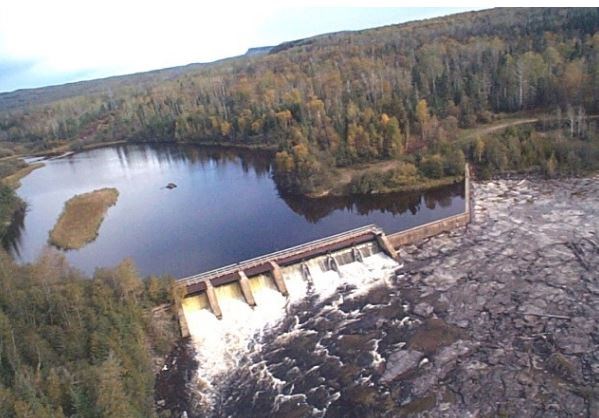The Ministry of Natural Resources and Forestry is proposing the partial removal of a decades-old dam in Black Sturgeon River Provincial Park north of Thunder Bay.
It's part of a series of possible amendments to the park plan outlined in a draft environmental study report now open for public inspection.
The study was prepared by an independent consultant and assessed various options for rehabilitating walleye and lake sturgeon populations, while continuing to provide sea lamprey control.
Camp 43 dam was built around 1960 for logging purposes, and played a role in keeping the lamprey population down in Lake Superior. However, it also cut off spawning areas for fish species such as walleye.
The Black Sturgeon River flows into Black Bay, which once had the largest population of walleye in Lake Superior, supporting what the government describes as "sizable" commercial and recreational fisheries. Due to a combination of factors, the walleye population collapsed in 1968.
A document filed with the province's Environmental Registry states that spawning habitat is limited in Black Bay, and that the remnant walleye stock spawns in the river. "Providing fish access to naturally occurring habitat is considered essential for the large scale rehabilitation of the native fish community in Black Bay and the Black Sturgeon River," the document notes.
The environmental study considered the effects of five alternatives and resulted in a preferred option.
A public notice states that in addition to partially removing the dam, the preferred plan includes the construction of a "multipurpose" sea lamprey barrier farther upstream, at the outlet of Eskwanonwatin Lake.
A spokesperson for the MNRF told tbnewswatch.com that the 53-metre-long dam no longer meets dam safety requirements. It consists of three sluice gates controlled by stop logs, and a weir. The gates are situated between concrete piers.
Under the proposed changes, MNRF says the piers would remain in place but the sluiceway concrete aprons would be removed to open the river system to fish movement and to reconnect a large portion of the river system to Black Bay.
The report is available for public viewing at the Waverley and Brodie libraries and at the Nipigon library.
The MNRF will also hold two open houses, in Nipigon on January 31 and in Thunder Bay on February 2.
